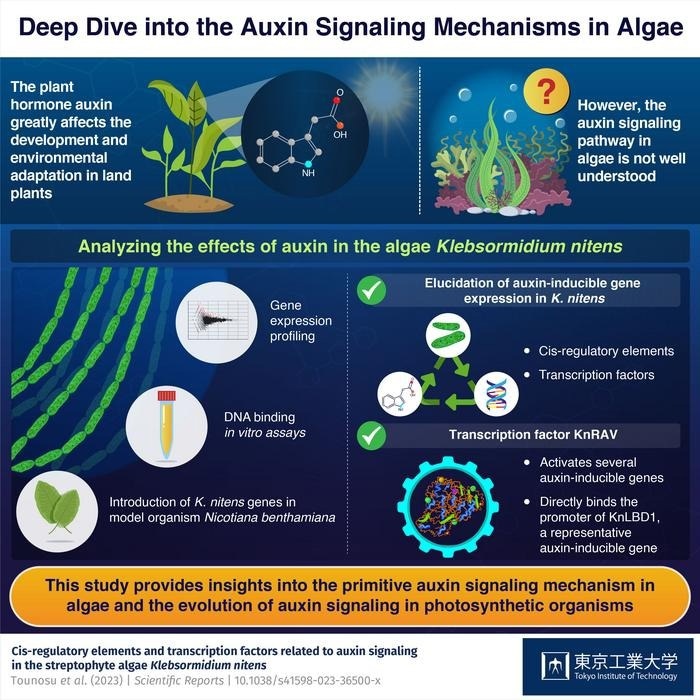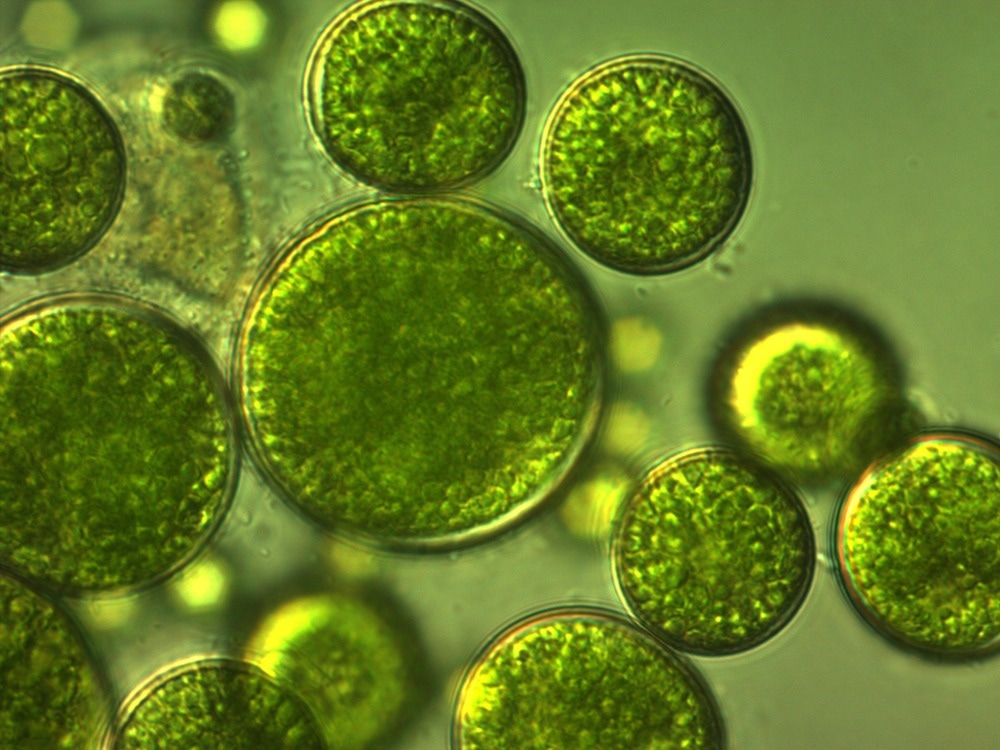Reviewed by Danielle Ellis, B.Sc.Jun 27 2023
Phytohormones are chemical messengers that control the growth of plants and also their response to the environment.
 This study provides insights into the primitive auxin signaling mechanism in algae and the evolution of auxin signaling in photosynthetic organisms. Image Credit: Technology at the Tokyo Institute of Technology
This study provides insights into the primitive auxin signaling mechanism in algae and the evolution of auxin signaling in photosynthetic organisms. Image Credit: Technology at the Tokyo Institute of Technology
As far as land plants are concerned, auxin is known as a considerable and well-studied phytohormone that affects several views of plant development. But the main cell receptor that regulates the auxin signaling machinery in land plants—transport inhibitor response 1/auxin signaling F-box (TIR1/AFB)—is missing in algae.
Earlier performed research has displayed that a TIR1/AFB-independent auxin signaling mechanism might be involved in controlling the gene expression and growth in algae. But not much is known regarding the basic mechanisms of the auxin signaling pathway and also their cause in algae.

Image Credit: Ye.Maltsev/Shutterstock.com
A research group from the School of Life Science and Technology at the Tokyo Institute of Technology (Tokyo Tech) in Japan performed a study on the algae known as Klebsormidium nitens.
The researchers chose this species due to two significant reasons. Earlier studies have shown that it produces indole-3-acetic acid (IAA), a kind of auxin generally seen in land plants.
Furthermore, the external application of auxin stops cell proliferation in K. nitens, indicating that this species may have primitive auxin signaling mechanisms. The study was headed by Assistant Professor Koichi Hori and was reported in the journal Scientific Reports on June 15th, 2023.
As a result, the team performed a series of experiments on K. nitens, such as RNA-sequence analysis, gene expression profiling, and DNA binding assays. Besides, they also introduced genes for several transcription factors that are possibly related to IAA signaling from K. nitens into Nicotiana benthamiana, a well-studied model organism in plant science with fixed analytical tools in scientific literature.
The experiments performed disclosed the fact that the RY motif was enriched in the promoter sequences of auxin-inducible genes in K. nitens. Also, they determined numerous cis-regulatory elements and transcription factors that reacted to the existence of IAA. Most significantly, they determined KnRAV—a transcription factor—as a main player in the auxin signaling mechanisms of K. nitens.
The results revealed that KnRAV activates several auxin-inducible genes and directly binds the promoter of KnLBD1, a representative auxin-inducible gene. Thus, KnRAV may have the potential to regulate auxin-responsive gene expression in K. nitens.”
Koichi Hori, Assistant Professor, Tokyo Institute of Technology
On the whole, the scientists elucidate the intricacies of auxin signaling in algae through several experiments performed in K. nitens. Describing the potential long-term significant implications of such findings, Dr Hori stated the following
The results provide new insights into the regulation of IAA-inducible gene expression in K. nitens. Moreover, the present findings not only enhance the understanding of auxin signaling in this alga, but also provide clues to discern the evolution of auxin signaling machinery in many other photosynthetic organisms.”
Koichi Hori, Assistant Professor, Tokyo Institute of Technology
Source:
Journal reference:
Tounosu, N., et al. (2023) Cis-regulatory elements and transcription factors related to auxin signaling in the streptophyte algae Klebsormidium nitens. Scientific Reports. doi.org/10.1038/s41598-023-36500-x